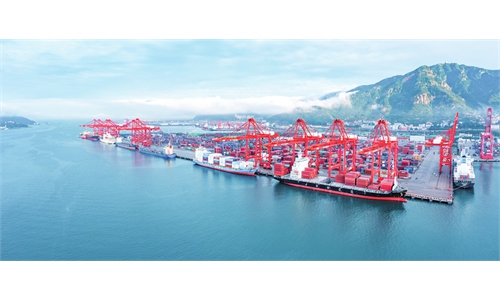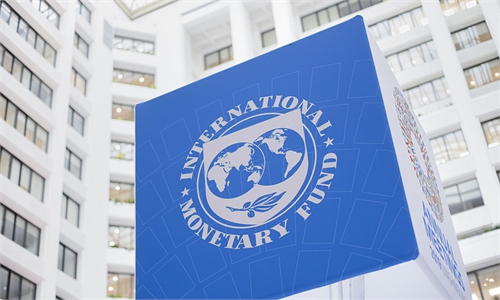
Photo:VCG
China's GDP expanded 5 percent to reach 61.68 trillion yuan ($8.49 trillion) in the first half of 2024, data from the National Bureau of Statistics (NBS) showed on Monday, indicating the world's second-largest economy has sustained the momentum of post-pandemic recovery, thanks to a continuous improvement in overseas demand, a pick-up in home consumption, and stepped-up government policy support, despite facing internal and external uncertainties.
In the second quarter, the GDP grew by 4.7 percent year-on-year, slightly down from the 5.3-percent growth recorded in the first quarter.
Observers said that the reading signaled that China is on a firm track to hit the annual economic growth target of around 5 percent in 2024. They also expected the tone-setting third plenary session of the 20th Communist Party of China (CPC) Central Committee to inject new impetus into second-half economic development and decisively lead the country to overcome rising headwinds to march toward Chinese modernization.
The 5-percent GDP increase in the first six months shows that economic growth is "stable" and that the economic operation in the second quarter has been keeping pace, Chinese analysts said.
"Though the GDP growth in the second quarter is lower than the first quarter, it's still a relatively fast growth among major economies, which builds a sound foundation for the achievement of the annual GDP target," Chen Fengying, an economist and former director of the Institute of World Economic Studies at the China Institutes of Contemporary International Relations, told the Global Times.
Factory activity remains a main engine for the economy, partly fueled by resilient demand overseas. The value added of industrial enterprises above a designated size jumped 6 percent year-on-year in the first six months, with the development of new quality productive forces showing more palpable drives.
Meanwhile, retail sales of consumer goods in the first six months were up 3.7 percent, and fixed-asset investment edged up by 3.9 percent, NBS data showed.
"The gaps between the supply and demand sides are narrowing, though the mismatch still persists. The domestic demand side shows a conspicuous rebound in the first half," said Zhang Jun, chief economist at China Galaxy Securities.
Chinese authorities have already put in place a bunch of measures to stimulate market demand, including the issuance of 1 trillion yuan ($138 billion) worth of ultra-long special treasury bonds as well as driving large-scale equipment renewal and trade-ins of consumer goods.
Analysts said that the fundamentals of China's economic recovery are anticipated to further stabilize and improve in the second half following the convening of the reform-themed Third Plenum that will map out a blueprint for the country's long-term development.
According to a Xinhua News Agency report, the plenum will primarily examine issues related to further comprehensively deepening reform and advancing Chinese-style modernization
In order to achieve the national target of basically achieving socialist modernization by 2035, China should continue to boost related reforms and innovations through developing new quality productive forces in order to enhance enterprises' innovation vitality and achieve high-quality development, Chen said.
Economists also took note of the sustained consumer spending recovery throughout the year. "Especially, the country's tourism industry reported robust growth over recent months, which will play an increasingly remarkable role in expanding domestic demand," Chen noted.
Though the Chinese economy faces internal and external challenges, such as the property sector correction and the increasingly volatile global geopolitical situation, Chen expresses confidence in the country's long-term economic prospects. "More efforts are needed to boost social confidence and unleash effective demand. To this purpose, we need more investment," she noted.
The implementation of more pro-growth measures and the bottoming-out of the property sector will also bolster the economic prospect.
Zhang suggested the authorities accelerate the issuance of special government bonds and further strengthen counter-cyclical adjustments to lower the overall financing costs for the real economy.




